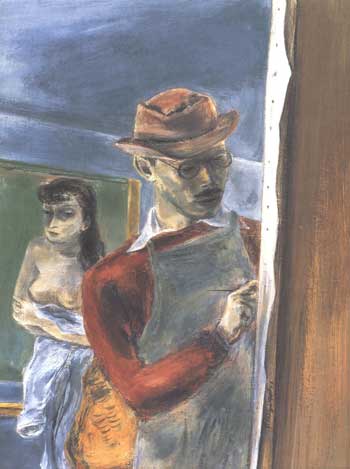
"At Work", 1943. Casein on gesso panel. (19 x 14 inches)
Fukutake Shoten Collection. Yasuo Kuniyoshi Museum Okayama, Japan
1940年からのクニヨシの作品は、幅広い人間の同情心と世界の状況の認識を反映し、
題材とスタイルの両方に興味深い展開が見られました。 それはもはや単純な女性像、
簡単な静物画やシンプルな風景画に閉じ込められていませんでした。
女性はいまだに彼の人物画の中心です、しかし彼女達は、より多くの連携と意義ある
設定のなかで表現されています。
彼の静物画は、静物画以上の何かになって来ました。
そして風景が、ほとんど全ての彼の絵の中に組み込まれました。

"Thinking Ahead", 1945. Oil on canvas. (16 x 12 inches)
The Phillips Collection, Washington, D.C.
Kuniyoshi's work since 1940 has shown interesting developments in both sub-
ject and style, reflecting broader human sympathies and an awareness of the
state of the world. It is no longer confined to the simple female figure, the simple
still-life, the simple landscape. Women are still the center of his figure paintings,
but they are shown in settings that have more associations and meaning. His
still-lifes have become something more than still-life. And landscape has entered
into almost all his pictures.

Kuniyoshi in his studio.

















